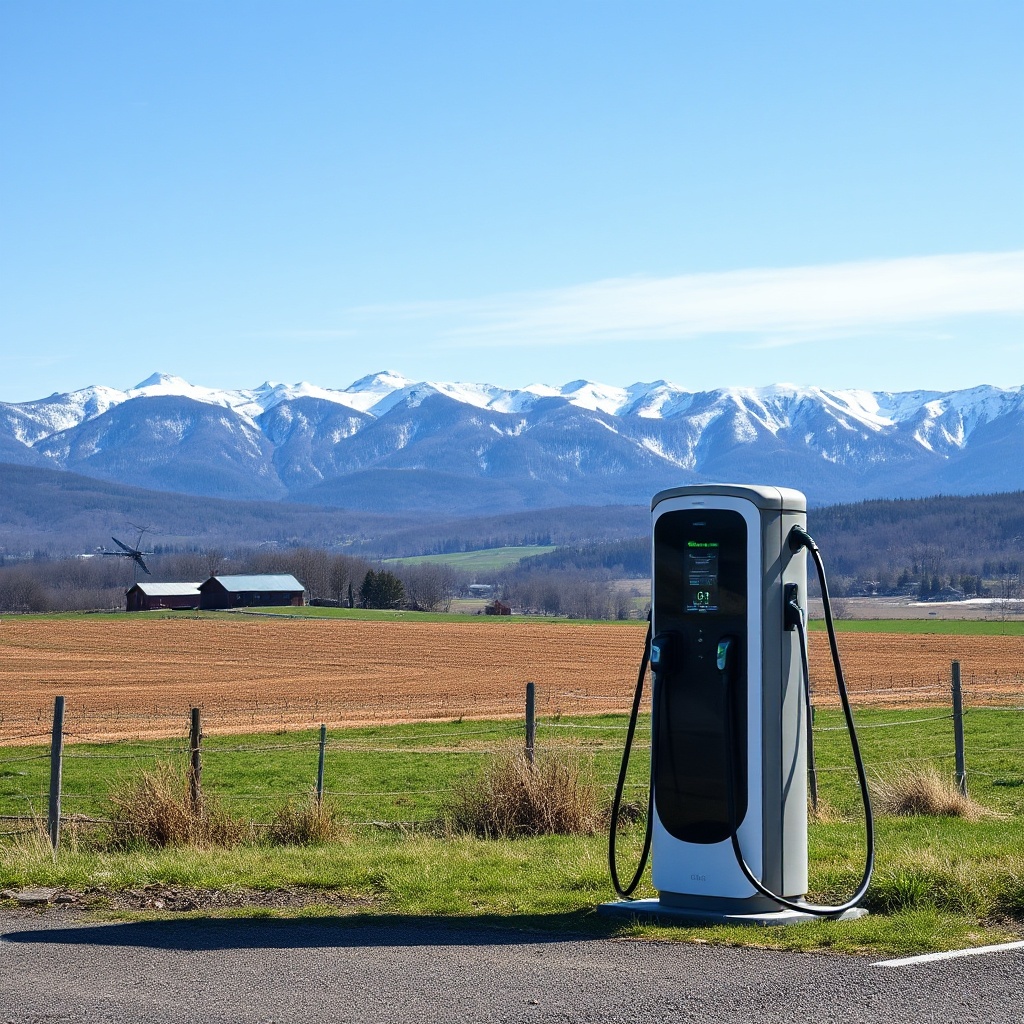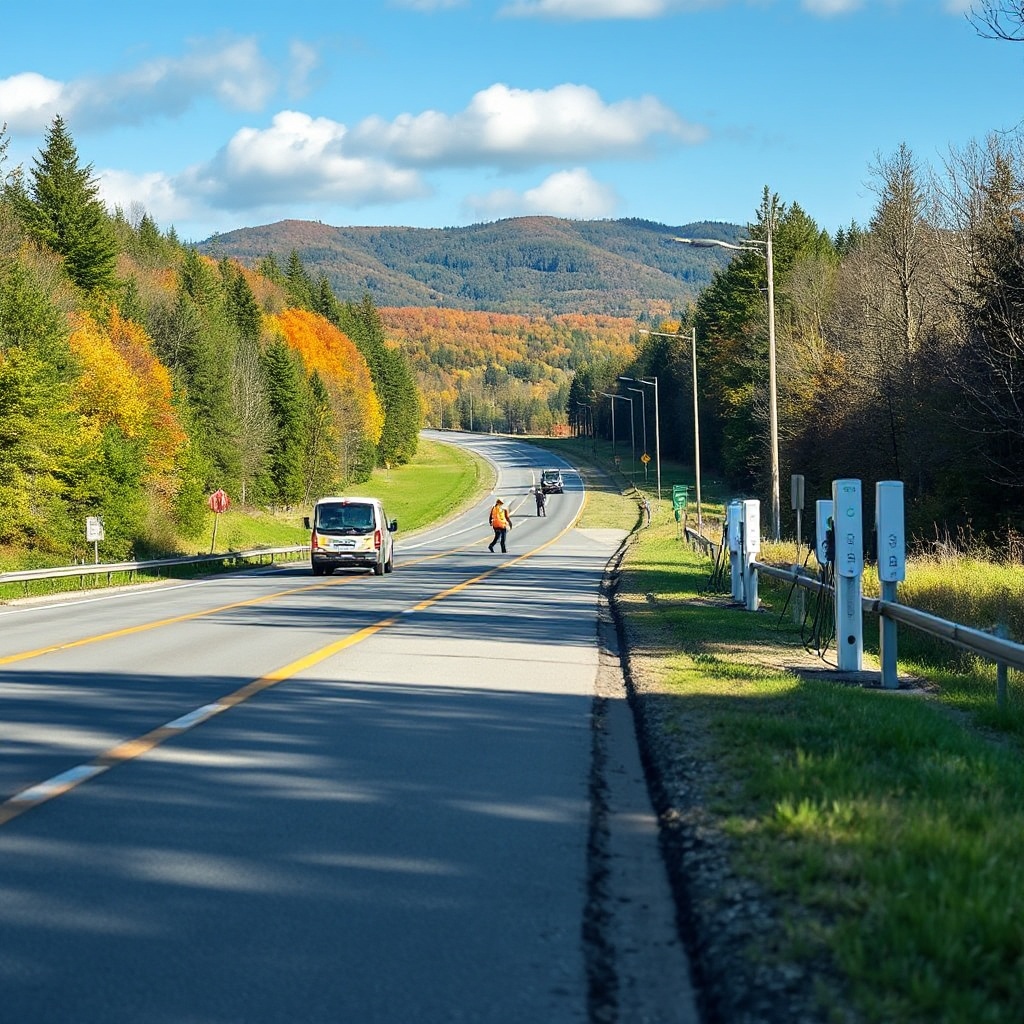
Vermont halts EV mandate due to rural infrastructure gaps, pausing 35% zero-emission vehicle sales requirement for 2026 as state tackles charging challenges and adoption rates.

Drivetech Partners
Vermont Governor Phil Scott's recent executive order pausing the state's electric vehicle mandate reveals a growing tension between ambitious climate goals and the practical realities of rural transportation needs. The May 2025 decision temporarily halts rules that would have required 35% of new vehicles sold in Vermont to be zero-emission by the 2026 model year, citing infrastructure gaps and technological limitations as major obstacles to rapid electrification.
Key Takeaways
Governor Scott's executive order halts EV mandate enforcement until at least the end of 2026, pausing requirements that would have led to complete phase-out of gasoline vehicles by 2035
Insufficient charging infrastructure and technological limitations for heavy-duty vehicles were cited as primary reasons for the pause
Vermont's current EV adoption rate of approximately 12% falls far below the mandated 35% target initially required for 2026
The state joins Connecticut, Maryland, Virginia, and Delaware in a growing national trend of reconsidering aggressive EV mandates
Despite the mandate pause, infrastructure development continues with significant state and federal funding for charging stations
Governor Scott Halts Vermont's Electric Vehicle Mandate
On May 13, 2025, Vermont Governor Phil Scott issued Executive Order 04-25, marking a significant shift in climate policy implementation. The order pauses enforcement of Vermont's zero-emission vehicle sales requirements until at least the end of 2026. This pause affects several regulations, including Advanced Clean Cars II (ACCII), Advanced Clean Trucks (ACT), and Heavy-Duty Engine and Vehicle Omnibus (HD Omnibus) rules.

The paused mandate would have required 35% of new vehicles sold to be zero-emission by the 2026 model year, eventually leading to a complete phase-out of gasoline-only vehicles by 2035. Under the executive order, vehicle and engine manufacturers cannot be penalized for noncompliance unless they implement "ratioing" practices – requiring dealers to sell EVs before allowing sales of combustion vehicles.
This decision represents a pivotal moment in Vermont's approach to transportation decarbonization, balancing environmental ambitions with practical concerns. The pause gives the state additional time to develop infrastructure and allow technology to mature before enforcing strict sales requirements.
Infrastructure and Technology Barriers Drive the Decision
Governor Scott highlighted several key obstacles that led to the mandate pause. Chief among these was insufficient charging infrastructure throughout the state. Vermont's rural geography creates unique challenges compared to more urban states, with long distances between population centers and limited access to fast charging options.

Technological limitations for heavy-duty and commercial vehicles pose particular challenges in rural and agricultural settings. Current electric options for trucks, farm equipment, and commercial fleets remain limited in range, capability, and affordability – critical factors for Vermont's agricultural and rural economies.
EV affordability remains a significant barrier, with electric models generally more expensive than comparable gasoline vehicles. Scott advocated for a "realistic" approach to transportation decarbonization focused on incentives and technological development rather than mandates that might force consumers and businesses to purchase vehicles that don't meet their needs or budgets.
Vermont's EV Adoption Gap and Climate Commitments
The current EV adoption rate in Vermont stands at approximately 12% of new vehicles registered, far below the mandated 35% target for 2026. With only about 3,100 plug-in vehicles on Vermont roads as of early 2025, the state would need a 16-fold increase to meet its climate objectives.
This widening gap between mandate targets and actual adoption rates was a key factor in the decision to pause the regulations. Despite the pause, Vermont's broader climate goals remain ambitious, requiring greenhouse gas emissions reduction to 26% below 2005 levels by 2025.
The transportation sector remains Vermont's largest source of carbon pollution, making vehicle electrification critical for meeting climate targets. The pause reflects a recognition that the pace of adoption needs to align with infrastructure development, technological advances, and market realities.
Stakeholder Reactions Reveal Deep Divisions
The mandate pause triggered polarized responses across Vermont. Climate advocacy groups including the Vermont Public Interest Research Group and Sierra Club condemned the decision, arguing it undermines climate goals and prolongs fossil fuel dependence in the transportation sector.
In contrast, auto dealers welcomed the pause, citing concerns about low consumer demand and potential complications with vehicle allocation from manufacturers. The Alliance for Automotive Innovation supported the governor's decision, highlighting the practical challenges of rapid electrification in a rural state like Vermont.
These divided reactions highlight the tension between environmental aspirations and economic realities. While few stakeholders dispute the eventual transition to electric vehicles, the timeline and implementation approach remain contentious issues.
Charging Infrastructure Development Continues
Despite the mandate pause, Vermont continues to invest heavily in charging infrastructure. Several key programs are accelerating the deployment of charging stations throughout the state:
Charge Vermont offers grants covering 90%-100% of installation costs for Level 2 and DC Fast Chargers at public locations through January 15, 2026
Green Mountain Power funds up to $40,000 per site for Level 3 (fast) charger installation with no application deadline
Vermont is receiving $21.2 million over five years through the National Electric Vehicle Infrastructure (NEVI) program for highway charging corridors
Special incentives target woman- and minority-owned businesses, nonprofits, and government agencies

This ongoing infrastructure development is critical to supporting future EV adoption, regardless of the mandate timeline. By focusing on building out charging networks while pausing sales requirements, Vermont aims to create the necessary conditions for successful electrification in the long term.
State-by-State Comparison: A National Retreat from Mandates
Vermont's policy shift doesn't exist in isolation. The state joins Connecticut, Maryland, Virginia, and Delaware in modifying or withdrawing from similar EV mandates. This emerging pattern suggests a national recalibration of timeline expectations rather than an abandonment of electrification goals.
Meanwhile, California maintains its requirements for 35% zero-emission vehicles by 2026, 68% by 2030, and full phase-out by 2035. However, even California's plan faces challenges, with the U.S. House of Representatives voting to block the 2035 EV plan, though Senate action remains pending.
This state-by-state comparison reveals the complex landscape of transportation policy across the United States. Rural and less densely populated states appear to be recognizing unique implementation challenges that differ from those faced by more urban and coastal regions.
Finding a Path Forward: Incentives vs. Mandates
Governor Scott's approach emphasizes market readiness and voluntary adoption over regulatory requirements. The mandate pause allows time for charging infrastructure development to catch up with proposed EV adoption rates, potentially creating a more sustainable long-term transition.
Future policy will likely need to balance environmental urgency with economic and technological realities. Continued incentive programs remain critical to stimulating consumer interest in zero-emission vehicles, even without mandates.
The shift toward incentives rather than mandates reflects a practical implementation strategy rather than opposition to electrification goals. By focusing on creating favorable conditions for adoption through infrastructure, education, and financial incentives, Vermont aims to achieve similar outcomes through different means.
The Rural EV Challenge: Vermont as a Case Study

Vermont's experience highlights special challenges for rural states in transportation electrification. Winter weather significantly impacts EV range and performance, creating additional barriers in northern climates where temperature extremes can reduce battery efficiency.
Agricultural and commercial vehicle electrification faces particular technological hurdles. Current electric options often lack the power, range, or versatility needed for farm equipment, heavy-duty trucks, and commercial applications common in rural economies.
Long distances between population centers complicate charging infrastructure planning, requiring more strategic placement of fast chargers along travel corridors. Unlike urban areas where chargers can serve many vehicles in dense neighborhoods, rural charging infrastructure must cover vast geographic areas with fewer potential users per station.
Vermont's policy shift could influence other rural states' approaches to EV transition timelines, potentially leading to more regionally customized implementation strategies that account for local conditions and needs.
Sources
WAMC - Vermont pauses enforcement of EV sales targets
Dealership Guy - Gov. Phil Scott Pauses Vermont's EV sales targets until 2026
EVXL - Vermont Governor Halts Electric Vehicle Mandates






